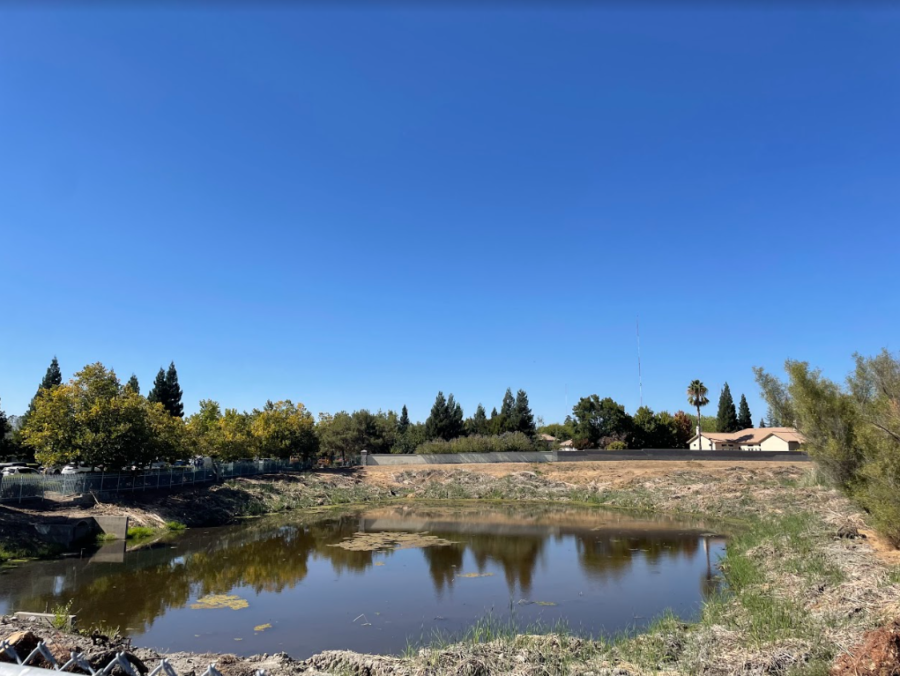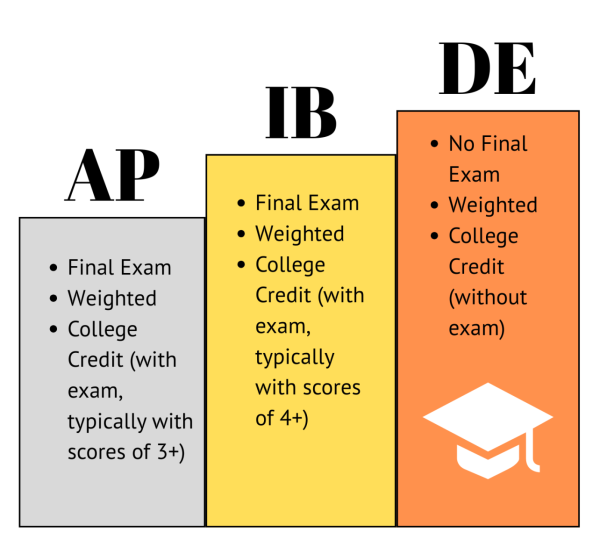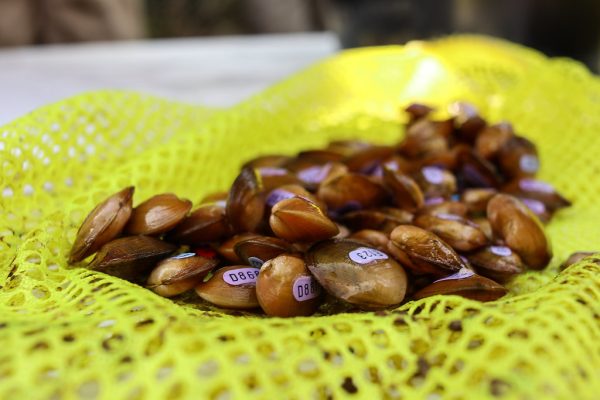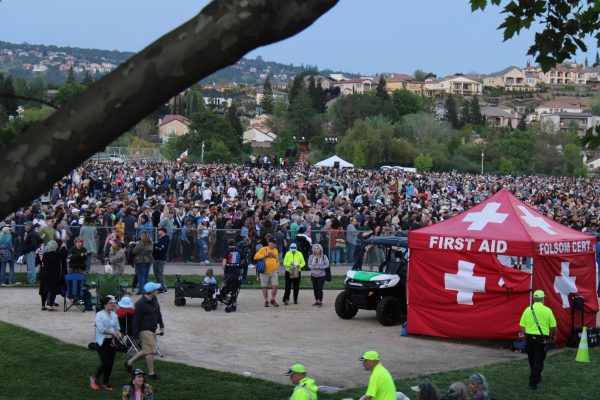Open space next to Granite Bay High School destroyed
The open space next to GBHS was destroyed over the summer, which is has caused concern for GBHS community members and the wildlife the reside there.
The open space is located adjacent to GBHS’s drop off circle. It is home to a wide range of wildlife.
The week before school started, a bulldozer went through and destroyed the open space next to Granite Bay High School, previously home to a pond, plants and a variety of animals.
The space is adjacent to the staff parking lot, which is why Bernadette Cranmer, head of the IB program and English teacher at Granite Bay, noticed that the space had been destroyed.
“There was this big huge tractor and I looked over and that whole front area was just devastated. I mean, there’s nothing alive in it,” Cranmer said.
A tractor removed most of the plant life and a pond that was previously in the space, simultaneously removing habitat.
Scott Braly, Biology and Fish and Wildlife teacher expressed his own concern with the changes.
“If it’s cleaner it may be better for us, but it’s not better for the wildlife that use it,” Braly said.
Johnson Ranch Management, which owns and manages the property, appeared to have a different idea than GBHS teachers of what the space was initially intended for.
Braly understood the space to be a mitigation project, to make up for the loss of habitat and provide drainage, by the engineering firm that built the school.
“If it was a mitigation project, there are certain things that can and cannot or shouldn’t be done,” Braly said.
Jennifer Richardson, the manager of the North Silverwood community, which encompasses the space, told Cranmer in an email response that the pond was added to prevent flooding of the surrounding area.
“It is not a nature preserve and was never intended as one,” Richardson said.
Alex Fisch, a supervising planner with the Placer County Planning Services Division expressed that he had a couple inquiries about the space recently.
Fisch confirmed that it is a stormwater mitigation facility.
“A lot of folks thought that that was a wetland,” Fisch said.
“It is a detention facility to shave off peak flows during heavy rainfall and precipitation where that area fills up with water to allow the water to drain out of the watershed before you send everything down.”
GBHS has experience with the flooding that can occur from changes in the water levels in the space.
Braly approximates that 15-17 years ago a beaver dam raised the water table under the school enough to cause flooding in the theater and pool, causing also the beavers to be removed.
Braly also stressed the importance of the open space for the things that live there.
Cranmer sent out an email addressing the issue to faculty on Aug. 18 expressing her concern and asking staff to join her and Braly in complaining to Johnson Ranch Management.
“I have appreciated the ducks, egrets, herons, geese, frogs and other creatures that I’ve spotted there,” Cranmer wrote.
Cranmer also recalled a “frog infestation” that occurred when the space received water one year.
Braly frequently takes his class on observational walks along the perimeter of the space.
Classes partake in “bird walks” and see what other animals and wildlife they can spot, tracked on a list now totalling over 98 plant and animal species. Some of the plants included willow trees, cattail and duckweed. The animals spotted ranged from pond turtles and mallards to a gray fox.
Braly said that approximately 20 years ago he and his students even installed duck tubes, wire fencing rolled into a tube and filled with grass and hay, to act as a nesting spot for ducks, who require tall grasses as protection from predators above.
“There’s not many of those places around anymore where they can nest and there’s so many roads that they run the risk and get over when they’re going to the pond,” Braly said.
For Cranmer, the space has served as a peaceful sight on her drive to work over the last 14 years.
“I just really love it. I love that even though we’re in an area that’s essentially a neighborhood, that we have something natural there,” Cranmer said.
While there have been minor changes in the past, Cranmer and Braly do not recall any such drastic changes as those that occurred in the week prior to this school year.
They both mentioned to prevent flooding and for fire safety, trimming the space makes sense.
“Facilities do periodically every 20, 25 or so have to have pretty heavy maintenance done because they will kind of start to take on some other characteristics,” Fisch said.
Looking forward, Braly is optimistic about the regrowth that is likely to occur over the next couple of years.
“I hope that in the future, it can be less dramatically altered,” Braly said.
Cranmer said that the plant and animal life once filling the space will return and that she will have to be reminded of the destruction in the years that it takes to grow back.
“I wonder if (Johnson Ranch Management) has to drive by and look at it and be reminded every day? I doubt it,” Cranmer said.

Elise is a senior and Co-editor-in-chief. This is her third year on the Gazette staff.










Nathan Abilla • Sep 23, 2022 at 10:56 am
I always wondered what that little pond was, but I always thought it was very pretty too. Its sad to see how empty it is now.
Brayden Woods • Sep 16, 2022 at 10:58 am
this sucks and makes me wonder what there going to do with the pond
Addison • Sep 16, 2022 at 10:57 am
I didn’t know this was going on. I hope they find a way to protect the animals using that area as a home.
Sophia Dissly • Sep 16, 2022 at 10:57 am
It is so sad that the open space next to GBHS was destroyed by a bulldozer. I’m happy that this article was written to let people know the effects.
Stef • Sep 16, 2022 at 10:57 am
In my opinion it doesn’t matter if the place wasn’t initially intended to be a wildlife habitat. Thats what it ended up being, and it became a home for an entire ecosystem. It’s just outright wrong to go over and bulldoze the area, possibly killing the life that lived there.
Claire • Sep 16, 2022 at 10:56 am
I remember watching ducklings swim around in the pond over the last few years. I think it’s sad that the little environment that developed there for so long is gone now.
Jonathan • Sep 16, 2022 at 10:55 am
It’s saddening to see this space in such a condition.
Anna • Sep 16, 2022 at 10:54 am
I think that it’s cute how there was a beaver dam under the school and that it’s sad the beavers had to be removed.
Ash • Sep 16, 2022 at 10:54 am
It is very sad that this is happening, and the fact that this could disrupt the ecosystem and ruin many animal lives is very devastating, and I hope that the ecosystem of the pond will return back to normal as soon as possible.
everett marsden • Sep 16, 2022 at 10:52 am
Personally I had no idea that any of this was happening and was shocked myself to even hear that the pond is gone because I haven’t even noticed. I think it may be a positive thing because of how bad it smelled and the waste it attracted, on the other hand though it may have been home to a lot of wildlife and it did provide a sense of nature while being near school.
Gwen Trujillo • Sep 16, 2022 at 10:48 am
I was wondering what the space was, I just thought it was a random abandoned lot no one cared about anymore. Sad to know it used to be something nice.
Gray • Sep 16, 2022 at 9:17 am
I’m glad this is being brought to attention, I had no idea that any of this was happening. I’m sure there’s lots of other GBHS students that also didn’t know.
Elijah • Sep 16, 2022 at 8:53 am
It was very smokey at school.